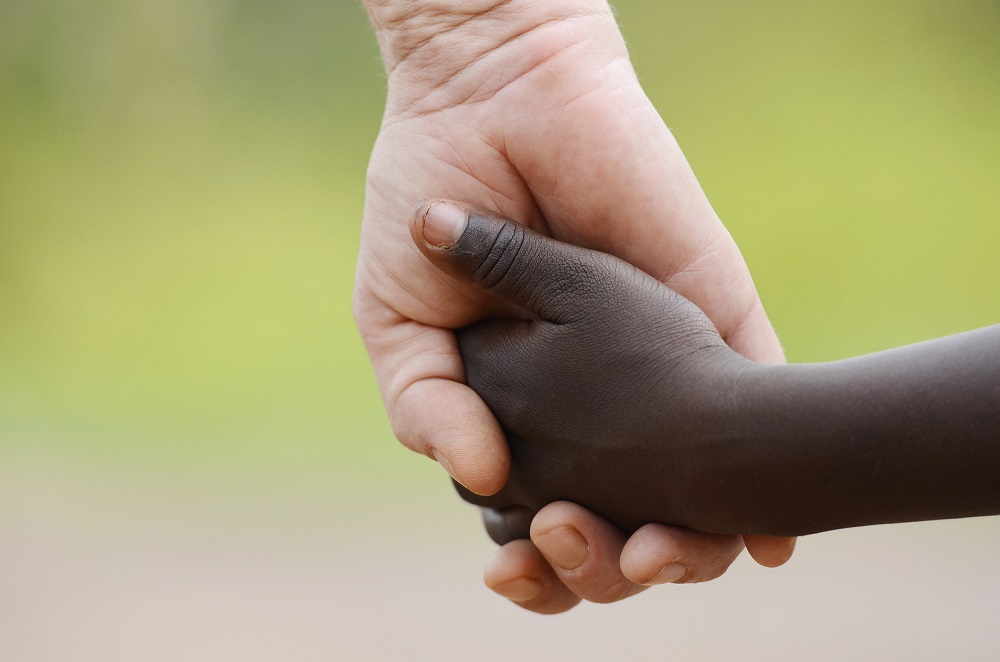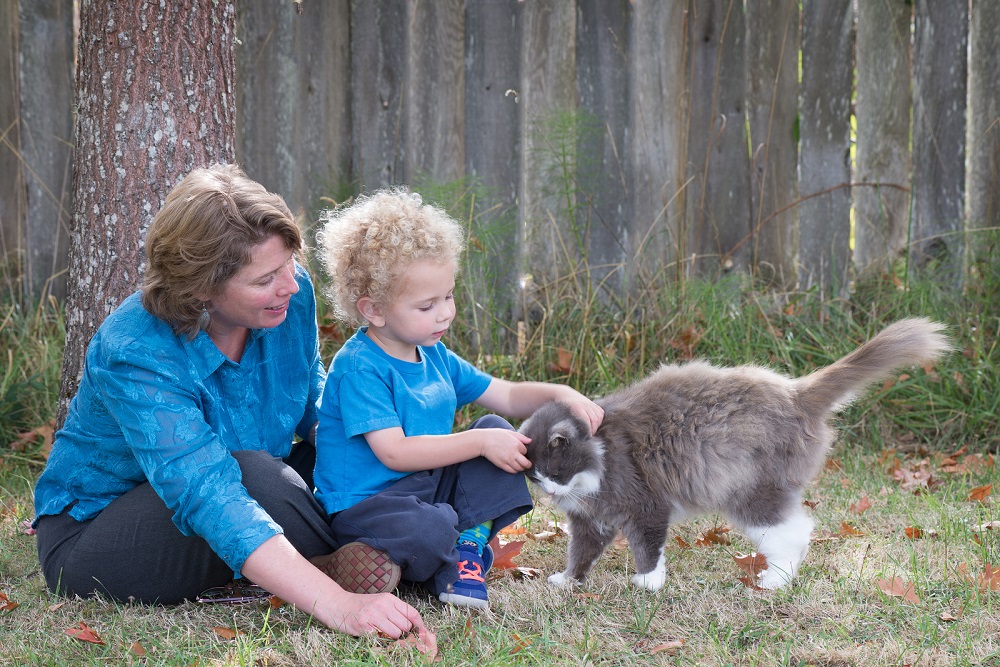How to Raise a Defender
3/3/2017

Back to the main Bully Prevention Guide.
A big audacious statement…The World needs more "defenders!"
What we see and hear in the media melds our minds to believe that we are sometimes helpless with what is happening in the world, especially recently in the United States. We have seen an uptick in gun violence, riots, protests, and people generally being bullies! What can we do about this as parents and what can our education system do to support the students in this ever-changing world? One simple answer, "DEFENDERS!"
How can we raise our children to be good defenders for themselves and for others? I truly believe as this concept grows, we will see a change in our society. What we model at home and at school with our words and actions is what our little ones replicate. The solution to raising more defenders lies in a partnership between home and school. Most students are with educators for 1,080 hours a year and with their parents or guardians for the remaining 7,680 hours. By not making time to teach our students some strategies and give them some tools, the world can be an ugly place!
Here are seven strategies parents and educators can use to create defenders. The prioritized list ends with the number one priority in which everyone should be paying attention!
PU #31 - Teaching Giving!
The ability to "give" teaches students that there are people less fortunate, which may not be only financially, that need our support. The ability to give can come in different forms: money, time, and needed materials.
Parents can teaching giving in several different ways. Personally, each year our kids see us give money and time to different causes. They understand that who we are as a family is based around giving. We have a long list of organizations that we give to; we are constantly going through our clothes to donate, we even had our kids donate toys they no longer used. I understand that we could give more to causes, but we are constantly deciding on making sure we can pay our own bills. Our family has refused to buy a larger house, eat at the most expensive restaurants, or drive all brand new cars. It is this fine balance between giving and making sure your family is financially adequate…I would hate to be considered a hypocrite as we teach giving!
Educators can teach giving by organizing students to collect food, clothing, and even going out into the community to donate time. Some school groups will donate time to a cause such as helping organize a benefit, working at a mission, or even doing work like shoveling snow or raking leaves for community members. At a smaller level, educators can model giving in our classrooms to others. We can acknowledge students who give and we can help create a sense of giving as part of the school culture.
The ability for students to learn about giving supports the idea of students becoming strong defenders.
PU #32 - Teaching Service Work!
Giving time may actually be service work. When parents teach their kids about service work, students learn that you are not always paid with money for work completed…it may come in a different form of satisfaction. In this day-in-age where students may only complete work because they are getting something for it, teaching students that working to help someone else gives you a sense of humbleness and fulfillment.
Service work at home with parents may come in the form of donating time at the local mission or soup kitchen. It may also come in the form of donating time to work with animals at an animal shelter. Finding something that is both serving the common good for the community, as well as something the kid is interested in can make it both fun and gratifying.
Service work at school with educators may come in the form of gaining school-wide support for a cause. Service work may be selling bracelets for an illness-stricken student, cleaning the outside of the school, rallying students to donate shoes for the less fortunate, or even popcorn Friday's where the money collected goes directly to a cause. The idea is that students create service projects in the school to support others with some guidance from adults. Even if the projects are not successful, students can experience the process of planning an event, organizing people, and promoting the cause.
These types of events are exactly what we need to be doing in order to create more defenders in our world.

PU#33 - Teaching Responsibility!
The term responsibility is a difficult concept for students to see, but making it visible supports the idea of how to become a strong defender. Whether a parent creates responsibility at home with chores, jobs, and other tasks, students need to learn that without it the ability to care about others and taking care of materials possessions is never gained. Students who have never experienced responsibility may believe that others will take care of them or take care of the world they live in. So, how do we teach it?
Parents can teach their children responsibility several different ways. Using an allowance is powerful for teach responsibility as it lets students know that work equals pay. In our household, there are going to be jobs, chores, and tasks that you do not get money for…we all contribute to the family. Then there are jobs that are outside contributing to the family. With these jobs, you will get an allowance or earn money per task. This is a hard concept to teach as a parent at first. Another strategy parents can use to develop responsibility is having a family pet. Kids can be in charge of specific jobs that care for the pet. This teaches responsibility in order to take care of an animal, and it helps reinforce the concept of not being egocentric.
Educators can develop responsibility in several different ways through homework, meaningful work jobs, and even the caring of other students. Teaching students that we care about each other and we need to keep each other safe in our learning community is vital to the culture of the school. Likewise, it is essential when creating a school culture of defenders!
PU#34 - Teaching by Real World Examples!
One of the best teaching tools for parents and educators is using real world examples. Using examples from the news, a parent's/teacher's past life experiences, or from a movie can be powerful teaching tools. Students can see and hear about how people treat each other, as well as discuss how they might react when put into the same situation.
Recently, there has been news about parents pulling their students from schools because of bullying. They talk about how they communicated with the school and let them know about the incident. Unfortunately, we do not get to hear the other side. What did the school do with this information? What steps did they put in place? What have they done to build defenders in their school?
Real world examples give students the connection to what they encounter on a daily basis in the school setting, as well as outside of school. Students need to know how others solved similar problems and they can process with adult support on how they will handle it as well. Parents and teachers can use the examples to teach to empathy. These examples, discussions on real world events, teach students how to be defenders.
5 - Teaching Kindness!
Another concept that can be hard to teach is kindness. What does kindness look like? Parents and educators must teach specifically what that looks like so their children can replicate the same behavior. Acts of kindness become tangible when students can see the outcomes.
Parents can teach kindness among their siblings, neighbors, and even randomly to others in the community. Parents can model this kindness while out-and-about in the community. Acts as small as holding a door for someone, letting a person go in front of them in the supermarket checkout lane, or allowing a car to merge into your lane are great examples to teach your children.
Educators can start a PBIS that encourages kindness. PBIS stands for positive behavior intervention systems. Staff members can make kindness visible through an Act of Kindness campaign. Celebrating students and staff members that illustrate kindness to each other publicly support the insurance that more kindness will occur. Students like having recognition for something as simple as having an adult acknowledge it on the PA or announcements. More elaborate PBIS programs can encourage and help reinforce kindness in the school.
Teaching kindness is one of the top three "defender" characteristics that we all need to be teaching!

6 - Teaching Tolerance!
Tolerance is another characteristic that is hard to teach. How do you teach something that is not tangible and difficult to understand? How can we make "tolerance" visible for students? We first need to define it because young students may not know the word. One of my favorite resources on teaching tolerance is a magazine distributed to over 450,000 educators titled, Teaching Tolerance. They define tolerance as,
"Tolerance is respect, acceptance and appreciation of the rich diversity of our world's cultures, our forms of expression and ways of being human. Tolerance is harmony in difference. We view tolerance as a way of thinking and feeling - but most importantly, of acting - that gives us peace in our individuality, respect for those unlike us, the wisdom to discern humane values and the courage to act upon them."
Parents' discussion with their kids on this topic if vital to the development of a morally strong child. As we all know, a student's perceptions and thoughts on how we perceive the people around us come from our parents. The words parents use to describe others is important to this development.
Coming from rural Montana, where in my hometown a high percentage of white Anglo-Saxon families live (90%+), the words my parents used still ring true with tolerance and kindness. My mom understood that my sister and I needed to treat everyone with respect and kindness no matter his or her background, skin color, or life situation. Life experiences support student's thinking on tolerance.
The ability for a child to be tolerant of others starts with a parent's first conversations, and is reinforced and taught from Kindergarten through graduation in the school setting. We need to continue to celebrate our differences. Likewise, we must continue to team together on teaching tolerance to create students that are strong defenders.
7 - Teaching Empathy!
To create defenders the number one priority of parents and educators is teach our students empathy. It is another intangible concept that we must make visible for our students; it is the ability to put ourselves in other people's situations. The single-most defining characteristic as a human being is our ability to teach our children the ability to see situations and people from other's perspectives.
Empathy is much more important to teach than sympathy. Sympathy we feel sorry for someone else; empathy, in contrast, lets us be an ally with the person. An article on the Teaching Tolerance web site state, titled, Helping Students Develop Empathy Instead of Sympathy,
An ally works with and listens to compatriots in the fight for social justice. A savior works on behalf of a marginalized group but often has an end goal in mind that does not take into account the voices of those on the margins, disavowing their agency in the fight.
Parents can teach empathy to students through the words and actions they model to their children. Parents must ask their children to look at situations from all perspectives, not just one. An example is the ability to flip our mindset from a fixed model to a growth model. Here is a well-known scenario: A car cuts you off in traffic. A person with a fixed mindset would become upset and may even have a little road rage towards the driver…cussing, and maybe even a hand gesture. A person with a growth mindset thinks, "That's okay…that person must be in a hurry because something is going on in their life." Parents can use the examples of the two different mindsets to help support students with the understanding of the concept of empathy.
Educators can teach empathy by making sure students get to feel what it is like to be other people's situations, not avoiding empathy, and stopping the concept of sympathy for others. We can empower students to be great defenders when they begin to understand that they can be an ally of another person through the concept of empathy. Empathy is difficult to teach as it asks students to find similarities between the people or groups of people marginalized. We ask students to feel what the characters in a story or a situation do…not so much feeling "for" the characters, but feeling "with" the characters. Then, continuing the conversation on how can we draw similarities between these characters and ourselves? If we can engage our students to feel this way, we can create a society of empowered, empathetic "DEFENDERS!"
MORE BULLYING PREVENTION GUIDE RELATED READINGS:
- 3 Types of Bullying in School + 1 Immense Social Challenge
- 5 Reasons Why Schools Have a Difficult Time Stopping Bully Behaviors
- 5 Reasons Why We Need to Define Bully Behavior and Stop Generalizing Events as "Bullying"
- 6+ Steps to Addressing Bullying When It Occurs
- 9 Strategies We Can Teach Students to Problem Solve
- 7 Ways How to Raise a Defender of Bully Prevention (Currently here)
- Provocative Victims and 7+ Practices for Victory
- One School Wide Philosophy: High-Trusting Relationships
- 13 Ideas to Combat Bullying at the Community Level
- 6 of the Most Hideous Cyber Bullying Tactics Used By Students
- 11 Communication Strategies to Combat Bullying
- 20 Ideas To Successfully Use Bully Data
- 5 Reasons Why Strong Instruction Affects Bully Prevention
- #1 Instructional Lesson for All Students on Bully Prevention
- Power of Buddy Classrooms: 19 Ideas
- 8 Ways to Teach Empathy
- 10 Ways to Empower Defenders
- 9 Reasons Culture Trumps Strategy
- One School Wide Strategy: Kindness Campaign
- Learning How to Say No and Set Boundaries with Parents - November 21, 2022
- If You Had Only One Behavior Strategy to Use in Your Classroom, What Would It Be? - September 26, 2022
- Live Your Code: 7 Strategies That Will Help You Be the Most Effective Educator You Can Be - August 15, 2022










